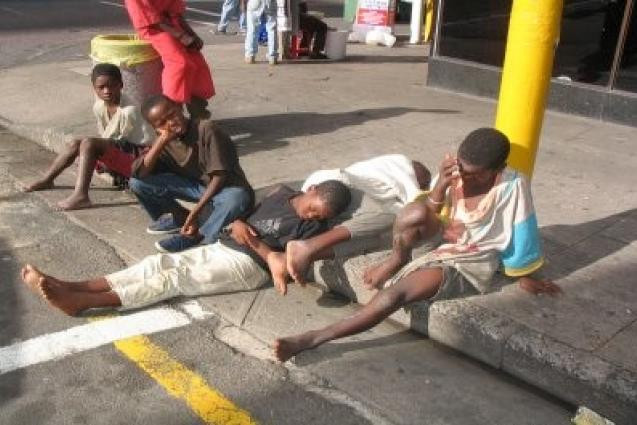
IN 2018, Zimbabwe launched its vision 2030 with aspirations to transform the local economy from low middle income into an upper middle-income economy by 2030.
For citizens, the vision meant that Gross National Income (GNI) per capita would grow from US$1450 in 2018 to over US$5000, resulting in significant improvements in standards of living for citizens.
The vison further entailssustained growth in nominal Gross Domestic Product (GDP) from the rebased 2018 levels of US$25 billion to over US$65 billion in 2030.
However, Zimbabwe’s population is expected to reach at least 17,6 million in 2030. This means that to achieve the US$5000 per person, GDP would need to be US$88 billion in 2030.
The vision necessitates sustaining economic growth rates of between 7 to 12% per annum from 2018 to 2030. After the vision launch, the economy slumped to a 6,5% decline in 2019 and a further 4,1% in 2020 before bouncing back to a 7,8% growth in 2021 and 3,5% in 2022.
This means that real economic growth within the last four years is about 1% from the 2018 figure since the growth years stem from a low base. Part of the values and objectives to attain the vision include good governance and rule of law, respect for human and property rights, and reduction in corruption.
Tangible benefits to citizens
For the citizens, vision 2030 aims to deliver high quality of life where poverty rate is reduced to less than 25% by 2030 while delivering universal access to clean water from less than 30% of 2017.
- ‘Zim’s retailers deserve a wage subsidy’
- ‘Zim’s retailers deserve a wage subsidy’
- Africa’s debt conundrum
- High input costs could hit crop output
Keep Reading
Similarly, the vision includes universal access to health care for citizens, stable and improved access to electricity to over 72% of the population, increase in formal employment rate to over 80%, reduction in income inequality through growing the middle class and improved access to education and employment for the youth.
In contrast to these aspirations set in the national vision, economic decline and instability has unearthed a plethora of social problems that are breaking the social fabric of the nation.
The social problems will also take years to undo if it is ever possible to do that. Some of the few notable problems include:
Increase in extreme poverty
The number of extremely poor Zimbabweans increased from 30% in December 2017 to 42% in 2019, 49% in 2020 and 2021 and declined to 41% in 2022.
Urban poverty has also risen to alarming levels with a contribution of over 10% in 2022. The major drivers of the increase in poverty are high levels of inflation (loss of income and buying power), Covid-19 induced income losses, recurring droughts, corruption, and unequal access to public services such as power, clean water, housing, and health care.
Emigration
Zimbabwe produces more than 25000 students graduates annually from its universities and other institutions of higher learning. However, years of economic decline mean that the economy cannot absorb all the skilled labour or provide competitive remuneration to guarantee basic standards of living.
Economic instability is claiming critical skills and graduatesin engineering and technology, natural and applied sciences, medical and health sciences, business and commerce and arts fields.
The exodus is pronounced on nurses, doctors, teachers, engineers, artisans and tradesman and other university graduates below the age of 45 years.
Statistics show that more than 4000 nurses and doctors left Zimbabwe between February 2021 and December 2022.Harare City Council, which runs the capital’s fire department, said the city lost 125 firefighters in 2021 alone.
Skilled Zimbabweans are leaving for greener pastures in more developed economies, such as United Kingdom, United States and Australia where their skills are optimally remunerated, despite considerations of working or living conditions.
The skills flight is not limited to skilled labour only, unskilled labour is also emigrating to neighbouring countries such as South Africa, Botswana, Namibia, and Zambia. It is estimated that over 3,5 million Zimbabweans now reside in South Africa.
Income inequality
Inequality in Zimbabwe has risen sharply from 44,3 in 2017 to 50,3 in 2019 as measured by the World Bank’s Gini Index.
The richest 10% in Zimbabwe consume 20 times more than the poorest 10%.
Inequality levels have widened in the last three years with the poor hugely affected by high levels of inflation, declining access to power and basic health care among other essentials.
The Gini index measures the extent to which the distribution of income or consumption among individuals or households within an economy deviates from a perfectly equal distribution.
A Gini index of zero represents perfect equality, while an index of 100 implies perfect inequality.
It is key to point out that countries with least cases of corruption, such as Norway, Denmark, Sweden, Belgium, Switzerland, Singapore, New Zealand and Finland also rank best on income inequality with ranks closer to zero.
Unemployment
Due to limited employment opportunities and poor remuneration for most of the formally employed, citizens resort to informal trading than job hunting.
As such, Zimbabwe’s low ranking on unemploymentand the ballooning informal economic activities are largely a result of the need to irk survival.
The 2022 Labour Force Survey published by the Zimbabwe National Statistics Agency (Zimstat) points that out of the 3,122 million people employed in the economy, close to 2,8 million (90%) derive their living from the informal sector as opposed to less than 500000 in formal employment.
Informality is also a factor of vulnerability, with millions of employees in the informal sector lacking job and social security, income consistency, health insurance, savings and living from hand to mouth. All these conditions are closely associated with poverty.
Decay in education
Poor remuneration for teachers and lectures had damaged morale to an extend that extra curriculum lessons become critical for learners. However, most poor families cannot afford the extrafees and learning material.
Similarly, Covid-19 induced school closureshave had far-reaching negative impact on poor households in the country with the more affluent and urban households able to afford online lessons.
However, widespread idleness amongst young people has been associated with an increase in early sex, leading to an increase in STIs and teenage pregnancies in schools.
Drug and substance abuse
Drug use, especially amongst the youth, increased during the Covid-19 lockdown. The main drugs used by poor youth are marijuana (about 80% of drug users), sodium polyacrylate (waterlock)and crystal meth (methamphetamine), with more affluent youth using cocaine and heroin. Some cough medicines (such as BronCleer, which contains codeine and alcohol) are used as drugs, particularly by the extremely poor.
At Sally Mugabe Hospital, one of the country's biggest, most people passing through the psychiatric unit are substance users. In 2019, the hospital attended to 150 substance abuse cases.
That number spiked to 825 in 2020. Drug dealers (rumoured to be politically exposed persons) are also taking advantage of Zimbabwe’s use of foreign currency as legal tender and the country’s porous borders to smuggle in drugs such as crystal meth, heroin, cocaine and cough mixtures like as BronCleer, to feed an ever-growing market for drugs among youths in high density areas and in schools.
GBV and crime rate
Gender-based violence and divorce cases have spiked in the last five years. The major causes are household food insecurity, increased unemployment, infidelity and financial worries, compounded by anger, anxiety and frustration about future prospects.
The rise in incidence appears to be particularly high in urban areas, where homesteads are small.
Statistics from the Judicial Service Commission (JSC) show that Zimbabwe recorded a 100% increase in divorce cases in 2022. Over 2735 divorce cases were filed in 2022 as opposed to 1351 cases in 2021.
Similarly, crime rates have increased, particularly armed robberies and theft increasing significantly in urban areas driven by increased youth unemployment, return migration from South Africa and poverty.
The loss of confidence in the banking sector and consistently high levels of inflation mean that cash is not being banked in the economy. As a result, armed criminals now target citizens, businesses and organizations, who keep large sums of cash on their premises.
Zimbabwean police points that between January and September 2022, crime cases increased from 283,973 to 301719 when compared to the same period in 2021.
Guns have also permeated the society at alarming rates as observed through gun violence and murder cases.
Other common social vices on the rise include bad driving practices and illicit sex.
In a nutshell, government policies divorced from eradicating the rising cases of extreme poverty can only help entrench social ills. If no action is taken in the short-to-medium term on addressing economic instability, Zimbabwe will witness acatastrophic collapse in the social fabric and growth in toxic social vices that will take ages to fix (if is even possible to fix the ills).
Bhoroma is an economic analyst. He holds an MBA from the University of Zimbabwe — vbhoroma@gmail.com or Twitter @VictorBhoroma1






